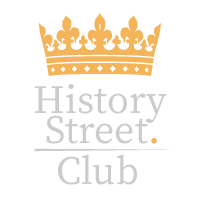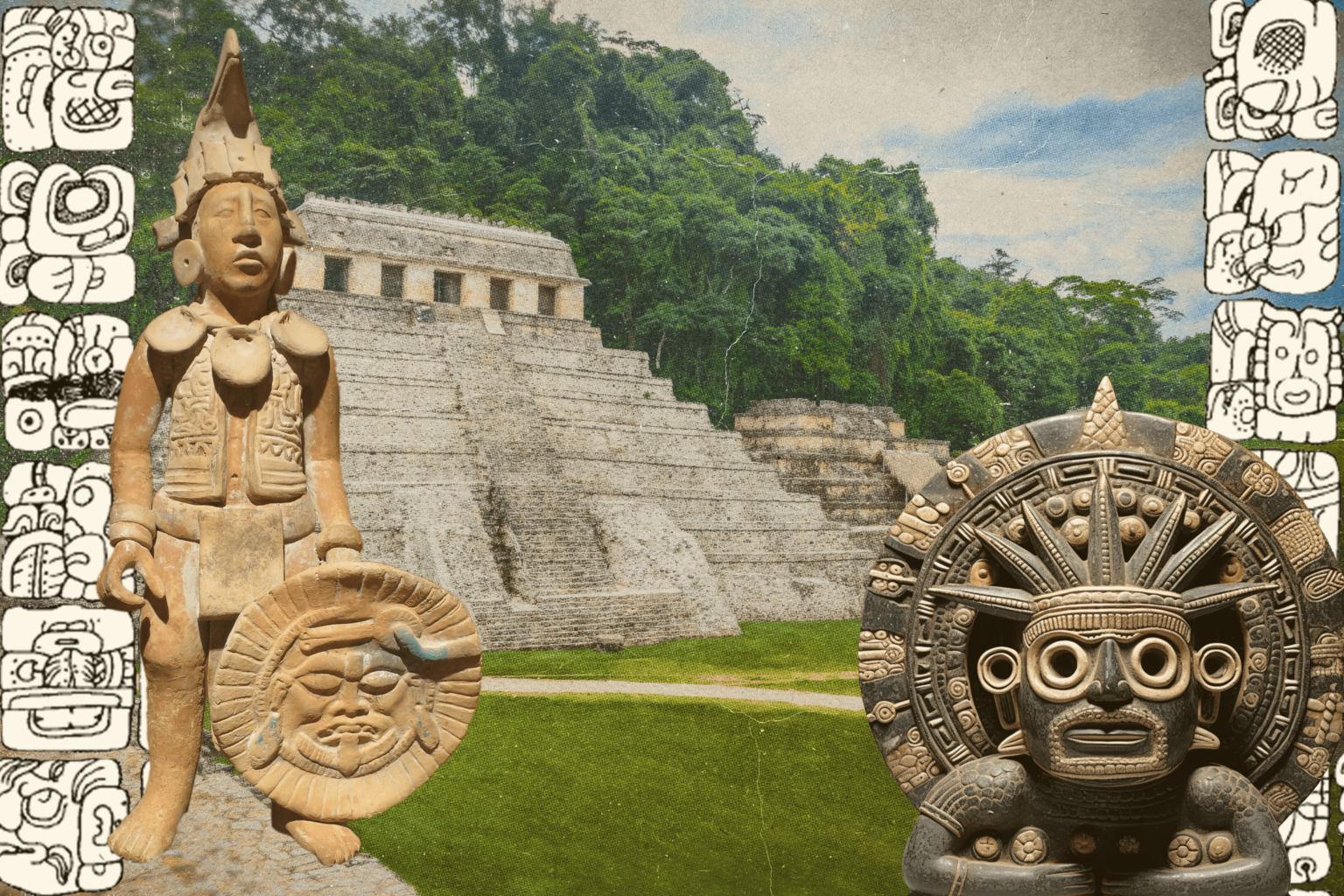Who where the Mayas? The Maya Civilization is a fascinating topic. This article explains all the key aspects of Maya culture, architecture, and achievements. Discover the significance of the Mayan calendar, temples, and hieroglyphs in this article.
What makes the Maya Civilization stand out?
The Maya are famous for their advanced writing system, detailed calendar, and impressive architecture, including tall pyramids and intricate temples. They used hieroglyphs to write about history, rituals, and royal families on stone monuments and in books made of bark. Their calendar accurately tracked time and celestial events, which was crucial for their religious ceremonies and farming schedules. Maya cities were centered around plazas with temples, palaces, and ball courts, showing their skill in building and planning communities.
Geography of the Maya Civilization
The Maya civilization was located in Mesoamerica, a region that includes parts of present-day Mexico, Belize, Guatemala, Honduras, and El Salvador.
The geography of this area played a crucial role in shaping the Maya civilization. There were three main regions where the Maya lived: the Southern Lowlands, the Northern Lowlands, and the Highlands.
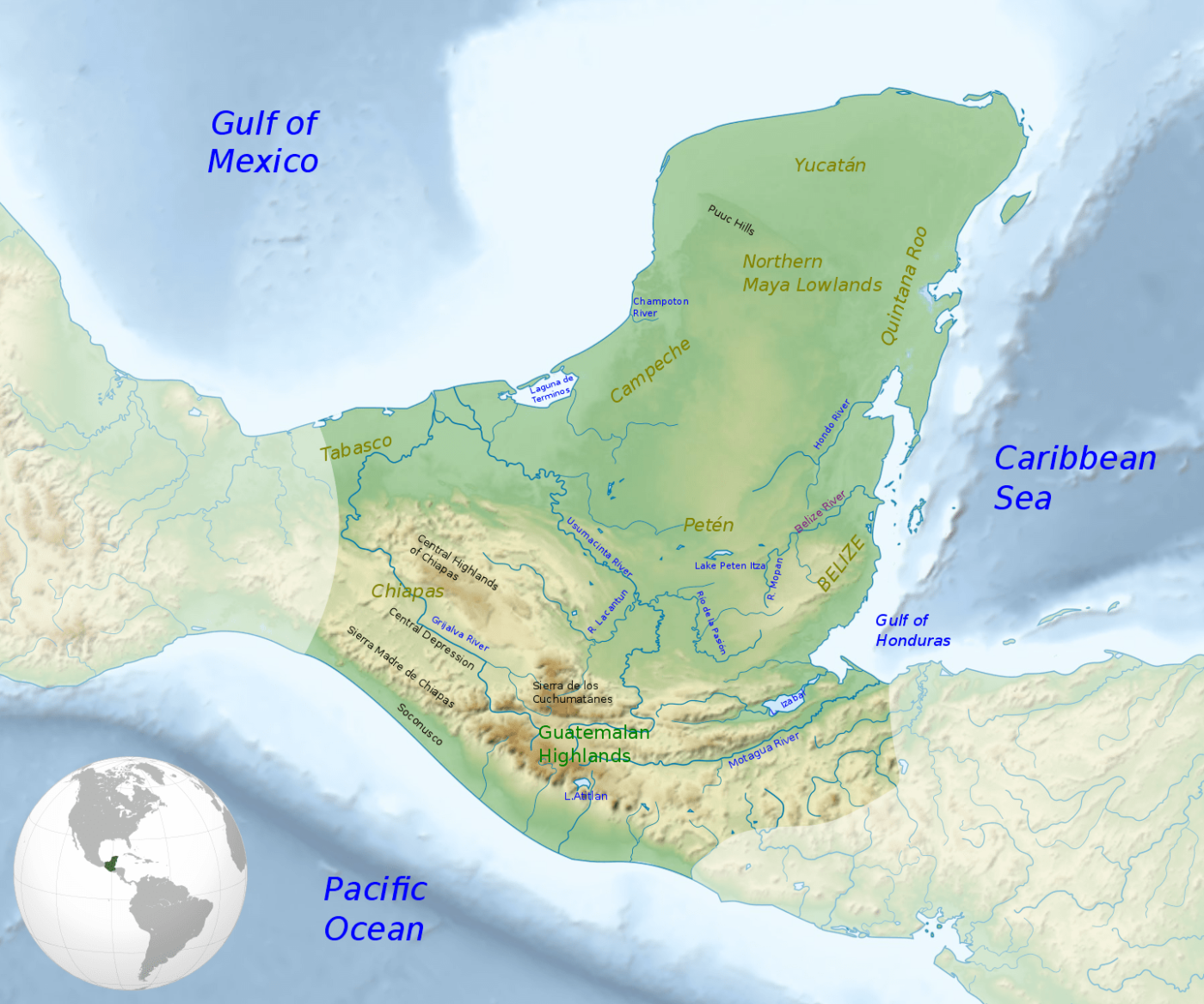
1. Southern Lowlands
The Southern Lowlands are in what is now northern Guatemala and parts of southern Mexico (like the state of Chiapas) and western Belize. This region is covered with dense tropical rainforests. The climate is hot and humid, with a lot of rainfall.
Many of the most famous Maya cities, such as Tikal, Palenque, and Copán, were located in the Southern Lowlands. The rich rainforest provided plenty of resources like wood, plants, and animals.
2. Northern Lowlands
The Northern Lowlands are in the Yucatán Peninsula, which includes parts of modern-day Mexico, Belize, and Guatemala. This region has a drier climate compared to the Southern Lowlands.
It is characterized by scrub forests and a lack of rivers. Instead of rivers, the Northern Lowlands have natural wells called cenotes, which were crucial sources of water. Important Maya cities like Chichen Itza and Uxmal were in this region. The cenotes not only provided water but were also considered sacred places by the Maya.
3. Highlands
The Highlands are in the southern part of the Maya region, covering parts of modern-day Guatemala, Honduras, and El Salvador. This region has mountains, valleys, and volcanoes. The climate is cooler and less humid compared to the lowlands. The soil in the highlands is very fertile due to volcanic ash, making it great for agriculture.
The highlands were important for agriculture, especially for growing crops like maize (corn), beans, and squash. Cities like Kaminaljuyú were located in the highlands. This region also had valuable resources like obsidian (a volcanic glass used for tools and weapons) and jade (a precious stone).
How Geography Affected the Maya Civilization
Agriculture: The diverse landscapes allowed the Maya to grow a variety of crops. In the fertile highlands, they could farm extensively, while the lowlands’ forests provided plenty of wild foods and materials.
Water Sources: In the Southern Lowlands, rainfall was plentiful, so the Maya built reservoirs and canals to manage water. In the Northern Lowlands, cenotes were essential for water supply. The highlands had rivers and streams fed by mountain rain and volcanic activity.
Building Materials: The dense forests provided wood for construction and fuel. The limestone in the Yucatán Peninsula was used for building their impressive stone structures.
Trade: Different regions had different resources, which encouraged trade among Maya cities. They traded goods like jade, obsidian, textiles, and food.
Cultural Development: The varied geography influenced cultural practices and city planning. For example, the use of cenotes in religious ceremonies in the Northern Lowlands and the terraced farming in the highlands.
Maya Civilization – Timeline and History
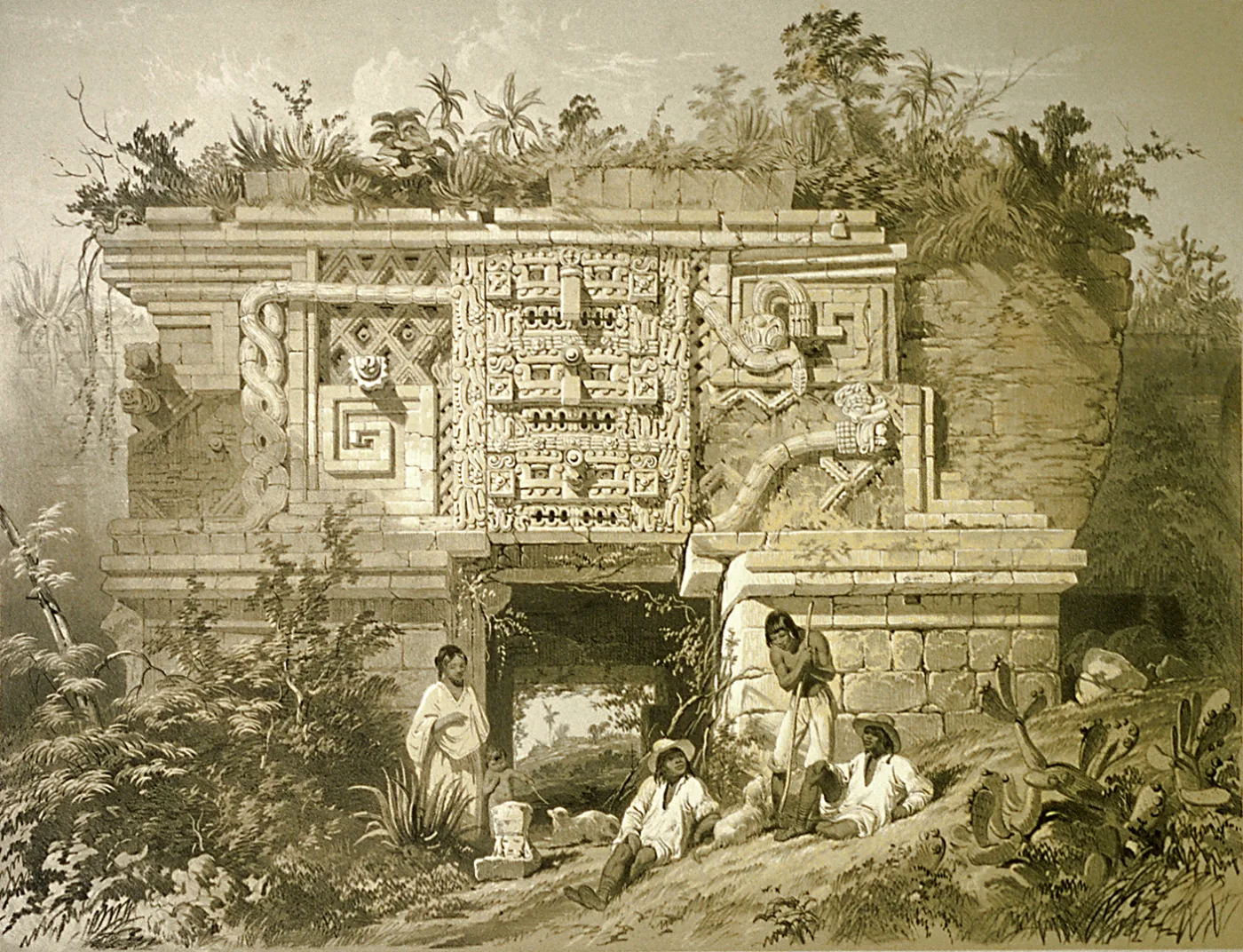
1. Preclassic Period (2000 BCE – 250 CE)
The earliest evidence of the Maya civilization begins around 2000 BCE, the Early Preclassic (2000 BCE – 1000 BCE) Period. During this time, the Maya started to establish small farming villages. They grew crops like maize (corn), beans, and squash.
In the Middle Preclassic (1000 BCE – 300 BCE), the Maya began to develop more complex societies. They built larger villages and started constructing the first ceremonial centers, with pyramids and plazas.
Late Preclassic (300 BCE – 250 CE), the Maya civilization continued to grow. Cities like El Mirador and Kaminaljuyú became major centers. They developed their writing system and made advancements in art and architecture.
2. Classic Period (250 CE – 900 CE)
Early Classic (250 CE – 600 CE), this period saw the rise of great Maya cities such as Tikal, Palenque, and Copán. The Maya built impressive pyramids, temples, and palaces. They also made significant progress in astronomy and mathematics.
In the Late Classic (600 CE – 900 CE) period, the Maya civilization reached its peak. They created elaborate artworks, carved stone monuments, and developed a complex calendar system. There were many powerful city-states, each ruled by kings and queens.
3. Postclassic Period (900 CE – 1500 CE)
After the decline of the major Classic period cities, new centers of power emerged, like Chichen Itza and Mayapan, this marked the Early Postclassic (900 CE – 1200 CE) Period. The Maya continued to build impressive structures and maintain their cultural traditions.
Late Postclassic (1200 CE – 1500 CE), the Maya civilization continued to exist, but many of the cities were smaller and less powerful. The influence of other Mesoamerican cultures, such as the Toltecs, was evident during this period.
4. Arrival of the Spanish (1500 CE – 1600 CE)
In the early 1500s, Spanish Conquest (1500 CE – 1600 CE) Period, Spanish explorers and conquerors arrived in the Maya region. The Spanish conquest led to the fall of many Maya cities and significant changes in their society.
5. Modern Era (1600 CE – Present)
Cultural Continuity (1600 CE – Present): Despite the Spanish conquest, the Maya people and their descendants have continued to preserve many aspects of their culture, language, and traditions. Today, millions of Maya descendants live in Mexico, Guatemala, Belize, Honduras, and El Salvador.
Key Features to Remember:
- Preclassic Period: Formation of early villages and first ceremonial centers.
- Classic Period: Peak of the Maya civilization with major cities, advanced astronomy, and impressive architecture.
- Postclassic Period: Continued cultural development with new centers of power.
- Spanish Conquest: Arrival of the Spanish led to the fall of many Maya cities.
- Modern Era: Maya culture and traditions continue to be preserved by their descendants.
Maya Society
Social Hierarchy
The Maya society was structured like a pyramid, with different levels of importance and power. At the top were the rulers, and at the bottom were the common people.
1.The King (Ajaw)
The king, or Ajaw, was the highest-ranking person in Maya society. He was considered a semi-divine ruler, often thought to be chosen by the gods. The king’s main duties included leading the military, performing religious rituals, and making important political decisions.

2.Nobles
Below the king were the nobles, who were wealthy and powerful families. Nobles held high-ranking positions such as priests, scribes (writers), and government officials. They lived in large houses near the city center and played key roles in the administration and religion of the city.
3.Priests
Priests were highly respected and responsible for conducting religious ceremonies, interpreting the will of the gods, and maintaining the calendar. They were also involved in education, teaching writing and astronomy.

4.Artisans and Merchants
Skilled workers like artisans and merchants were important in Maya society. Artisans created beautiful pottery, sculptures, and jewelry. Merchants traded goods like jade, obsidian, textiles, and food across different Maya regions.
5.Commoners
Most Maya people were commoners, including farmers, laborers, and workers. They lived in small houses made of wood and thatch on the outskirts of the city. Commoners grew crops like maize (corn), beans, and squash, and provided the food needed for the entire society.
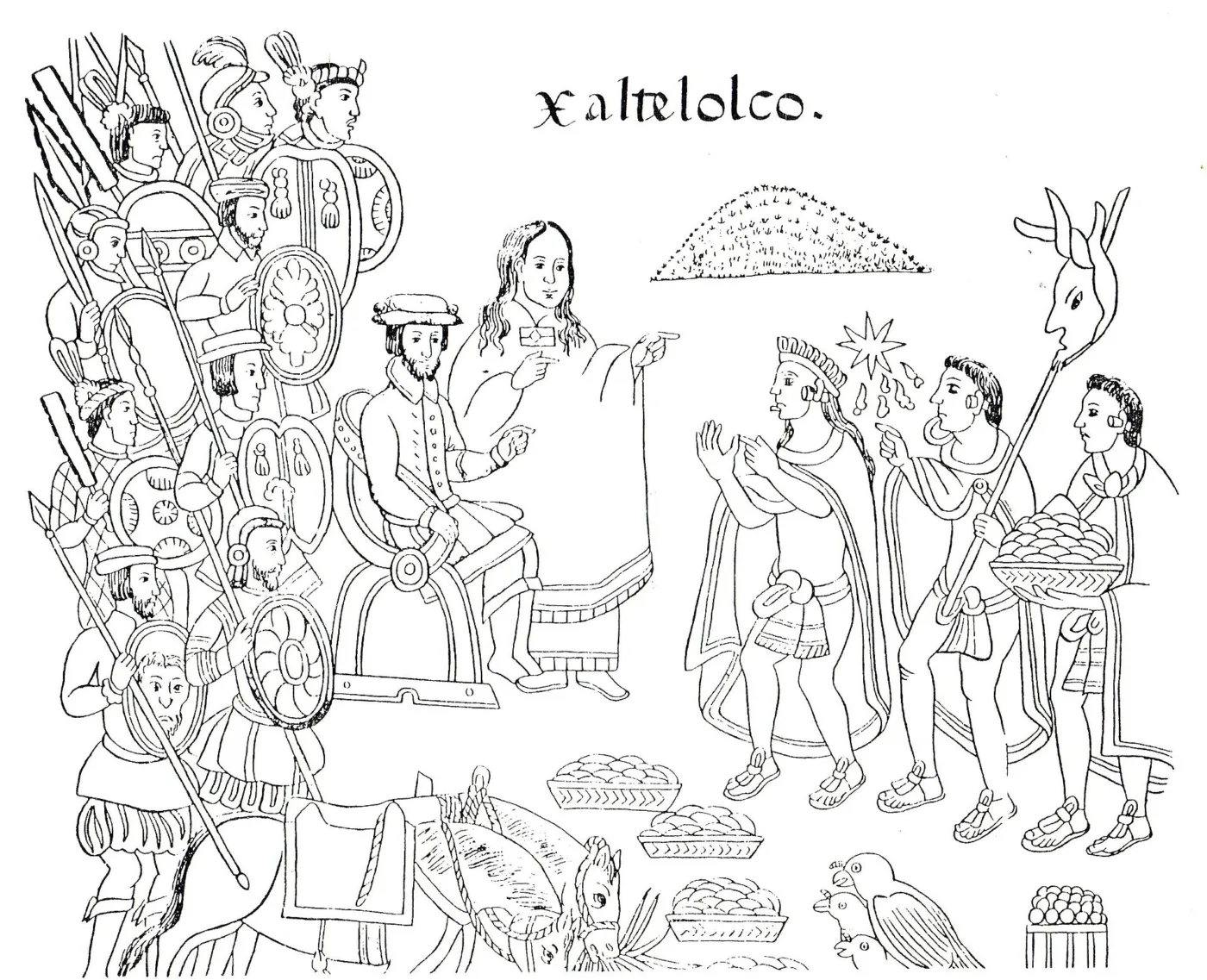
6.Slaves
At the bottom of the social pyramid were slaves. Slaves were usually prisoners of war, criminals, or people who had fallen into debt. They performed hard labor and served the nobility and priests.
Daily Life in the Maya Period
Housing
The type of house you lived in depended on your social status. Nobles lived in large stone houses, while commoners lived in smaller, simpler homes made of wood and thatch. Villages were often built around a central plaza, with temples and palaces in the middle.
Clothing
Clothing also varied by social status. Nobles wore elaborate clothing made of fine fabrics, adorned with jewelry and feathers. Commoners wore simpler clothes made from woven cotton. Men typically wore loincloths, and women wore skirts.
Food
The Maya diet was based on maize (corn), which was a staple food. They also ate beans, squash, chili peppers, and avocados. They enjoyed making tamales and tortillas from maize. Wealthier Maya could afford to eat meat like turkey and deer, and they also enjoyed chocolate made from cacao beans.
Education and Writing
Education was mainly for the children of the nobles. They learned to read and write using the Maya hieroglyphic script, and studied subjects like astronomy, mathematics, and religion. The Maya were one of the first civilizations to develop a writing system and a concept of zero in mathematics.
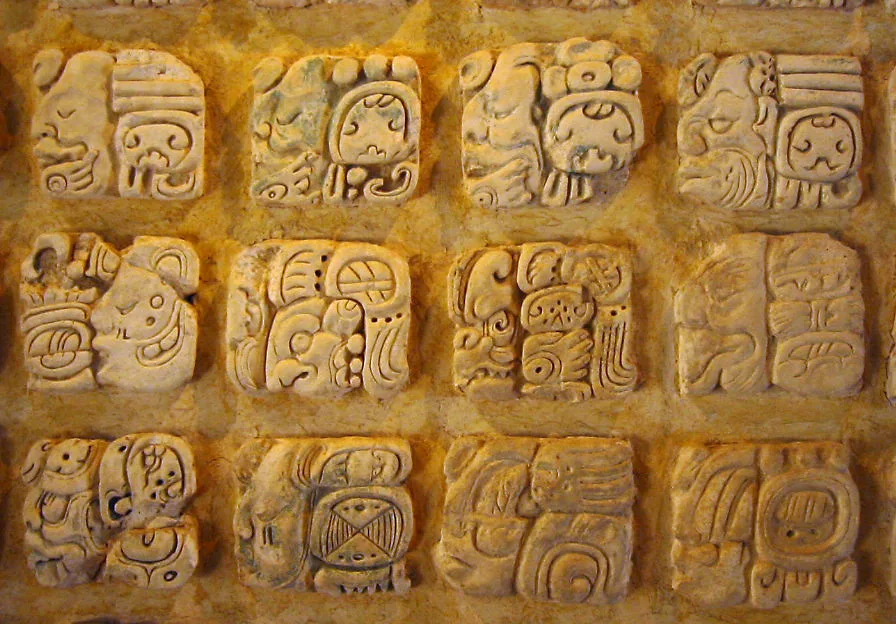
Religion and Rituals
Religion was central to Maya life. They believed in many gods related to nature, such as the Sun God, the Rain God, and the Maize God. Priests conducted elaborate rituals and ceremonies to honor these gods, often involving offerings of food, incense, and sometimes bloodletting (self-sacrifice by drawing blood). Major ceremonies took place in large temples and pyramids.
Recreation
The Maya enjoyed various forms of recreation, including music, dance, and games. One popular game was the Maya ball game, played with a rubber ball on a special court. This game had religious significance and was sometimes used to settle disputes between cities.
Politics and Warfare
The Maya civilization had a complex political system that varied over time and across different city-states. Here’s how politics worked and what set them apart:

Political Structure in the Maya Period
- City-States
The Maya civilization was not a unified empire but rather a collection of independent city-states. Each city-state had its own ruler, government, and territory. Cities like Tikal, Palenque, Copán, and Calakmul were powerful centers that sometimes competed for dominance. - Rulership
Each city-state was ruled by a king, known as an Ajaw. The title of Ajaw was hereditary, passed down within noble families. The king was considered semi-divine, acting as an intermediary between the gods and the people. His duties included leading religious ceremonies, making decisions in times of war, and overseeing the administration of the city. - Nobility and Elite
Beneath the king were the nobles and elites, who held positions of power in government, religion, and military affairs. They advised the king, managed trade and agriculture, and ensured the city’s prosperity. - Councils and Governance
Cities had councils and assemblies where decisions were made collectively. These councils included nobles, priests, and sometimes wealthy merchants. They discussed issues like trade agreements, alliances with other cities, and strategies for defense. - Trade and Diplomacy
Diplomacy and alliances were important in Maya politics. City-states engaged in trade networks that spanned Mesoamerica, exchanging goods like jade, obsidian, textiles, and food. Diplomatic marriages and alliances helped maintain peace or forge military alliances against common enemies.
Warfare in the Maya Period
Warfare was a significant aspect of Maya society and politics. The Maya were known for several distinctive features in their approach to warfare:
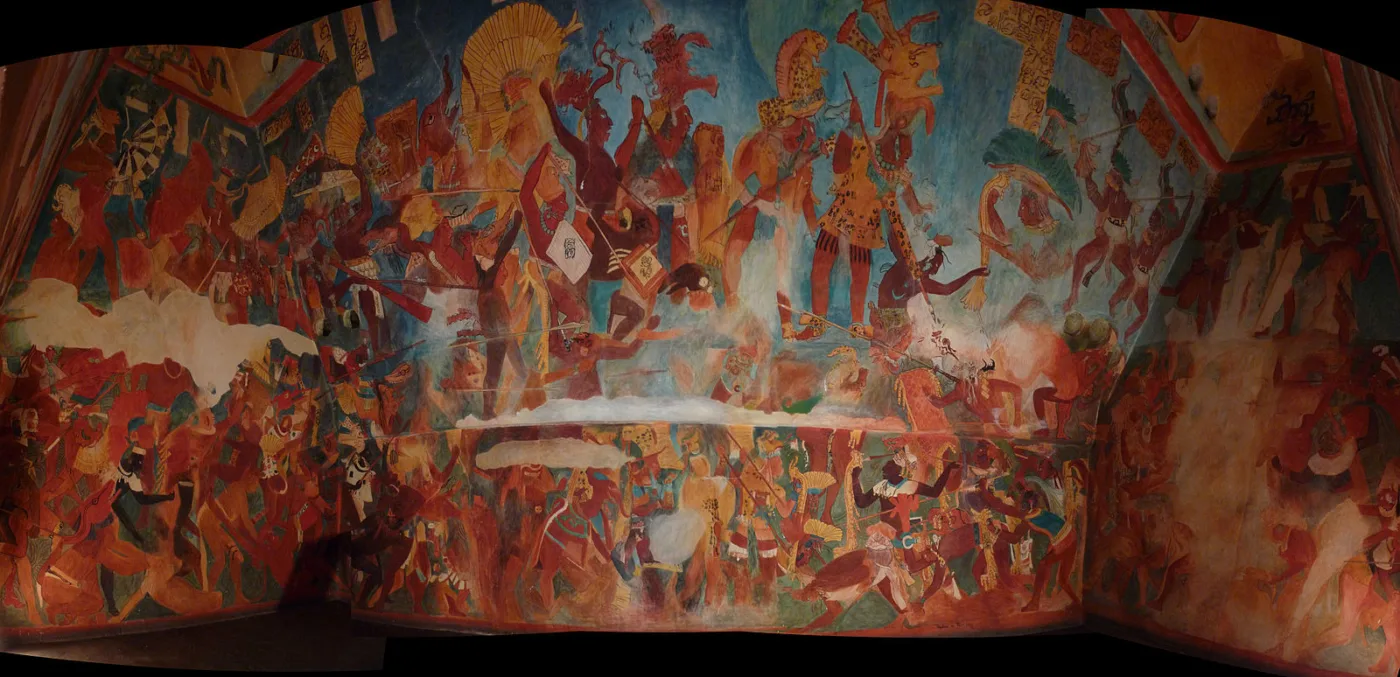
Military Strategy: Maya warfare was not constant but occurred during specific periods of conflict or competition for resources and territory. It was highly ritualized and often aimed at capturing prisoners rather than outright conquest.
Weapons and Tactics: Maya warriors used a variety of weapons, including spears, daggers, and axes made from obsidian (a sharp volcanic glass). They also used wooden clubs and sometimes shields made of wood or animal hide.

Fortifications: Maya cities were often surrounded by defensive walls and watchtowers to protect against attacks. These fortifications were built using stone and earthworks and helped defend against enemies during times of conflict.
Captives and Sacrifice: Capturing enemies in battle was highly valued. Prisoners of war were often sacrificed in religious ceremonies to appease the gods and ensure prosperity and victory for the city. The Maya believed that sacrificing captives strengthened their connection with the gods and maintained cosmic balance.
Economy and Sustainability
The Maya civilization had a diverse and thriving economy that supported their society’s growth and development. Here’s a closer look at how their economy worked:
Agriculture
Maize (Corn) Farming: Maize (corn) was the staple crop of the Maya civilization. They developed advanced agricultural techniques such as terracing and raised fields to cultivate maize. Other crops included beans, squash, chili peppers, avocados, and cacao (used to make chocolate).
Terraced Farming: In the mountainous highlands, the Maya built terraces to farm on hillsides. These terraces helped prevent soil erosion and allowed them to grow crops in areas with steep terrain.
Slash-and-Burn Agriculture: In the rainforests of the lowlands, the Maya practiced slash-and-burn agriculture. They cleared small plots of land by cutting down trees and burning the vegetation. This method enriched the soil and allowed them to grow crops for several years before moving to a new plot.
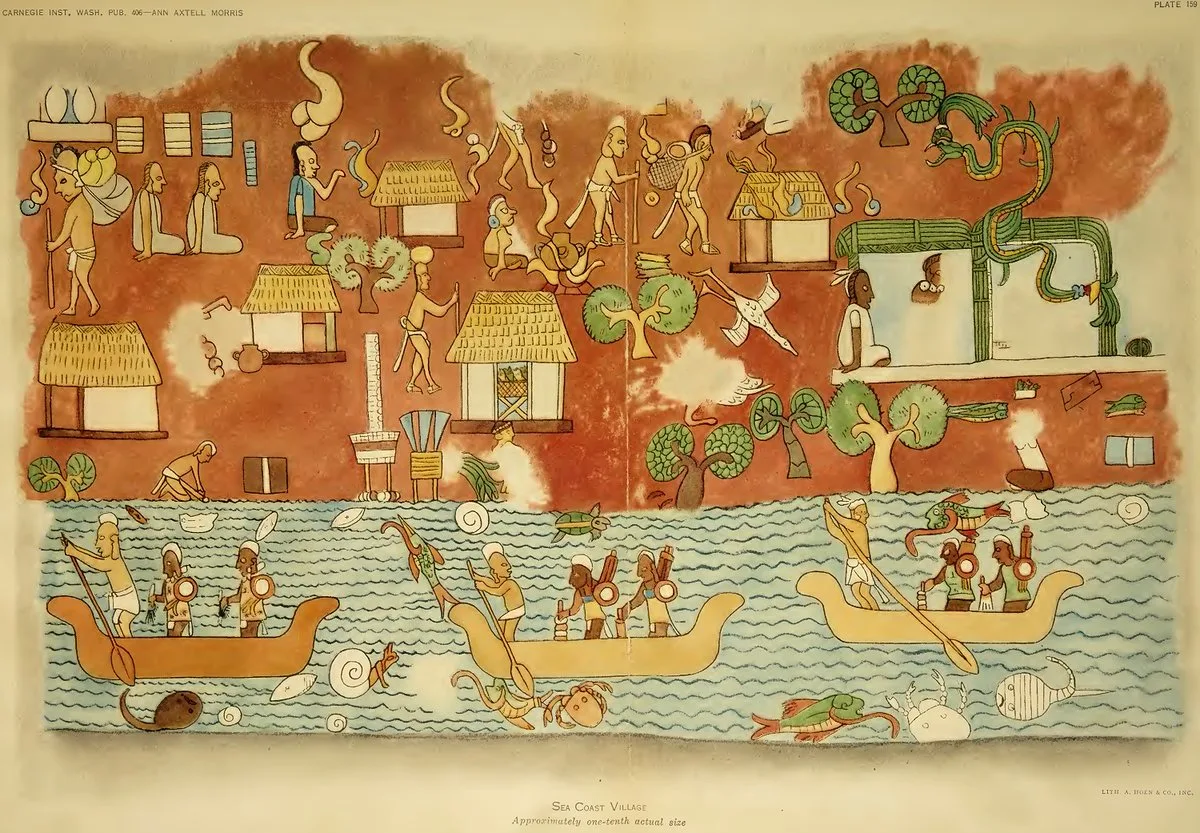
Trade and Commerce
The Maya engaged in extensive trade networks that connected different regions of Mesoamerica. They traded goods such as jade, obsidian (volcanic glass), textiles, ceramics, feathers, salt, and foodstuffs like cacao beans.
Additionally, Maya cities had bustling marketplaces where people from different social classes gathered to buy and sell goods. These marketplaces were important centers of economic activity and social interaction.
Maya merchants also traveled long distances to exchange goods with distant city-states. Trade routes linked the highlands, lowlands, and coastal regions, facilitating the exchange of valuable commodities.
Currency and Barter
The Maya did not use coins but instead relied on a system of barter and trade using commodities like cacao beans, jade, quetzal feathers, and textiles as forms of currency. These items had intrinsic value and were used in exchange for goods and services.
Maya society had elements of a market economy where supply and demand influenced prices. The value of goods could vary based on their scarcity, quality, and desirability.
Economic Specialization
Maya artisans specialized in crafting pottery, sculptures, textiles, and jewelry using local materials and techniques. Artisans created items of both practical use and ceremonial significance.
The Maya economy had a hierarchical structure, with elites and nobles controlling valuable resources and luxury goods. Social status often determined access to certain commodities and trade opportunities.
Culture and Achievements
Art and Architecture
The Maya civilization is famous for its incredible art and architecture, which reflect their advanced skills and deep cultural beliefs. Maya art is known for its detailed and vibrant imagery, often depicting gods, rulers, and scenes from everyday life. Artists used various materials like stone, wood, jade, and ceramics to create sculptures, pottery, and jewelry. They carved intricate designs into stone monuments called stelae and crafted beautiful relief sculptures on temple walls.

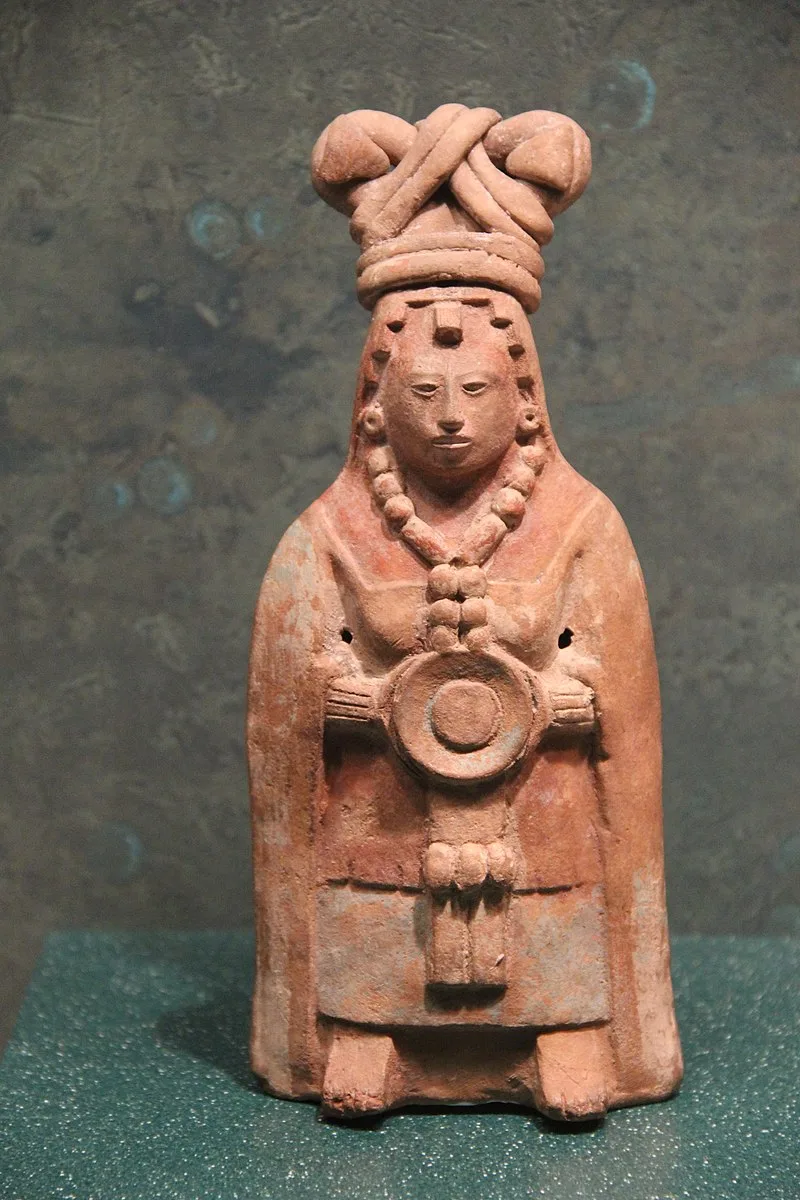
Maya pottery was not just practical but also highly decorative, featuring painted designs that told stories or showed important symbols. Their textiles were another form of art, with women weaving intricate patterns and symbols into fabrics dyed with natural colors. Famous artifacts include the jade mask of Pakal the Great, the carved lintels from Yaxchilan, and the intricately painted ceramics from the city of Naranjo.

Maya architecture is equally impressive, characterized by monumental structures such as pyramids, temples, palaces, and ball courts. They built these structures using large limestone blocks, carefully fitted together without mortar. The pyramids, like the famous Pyramid of Kukulcán at Chichen Itza, were not only grand but also aligned with astronomical events, showing the Maya’s advanced knowledge of astronomy. These pyramids often served as the centerpiece of their cities, surrounded by plazas, temples, and palaces that demonstrated their engineering prowess and urban planning skills. The Maya also built ball courts where they played a ritual ball game that had both religious and social significance.
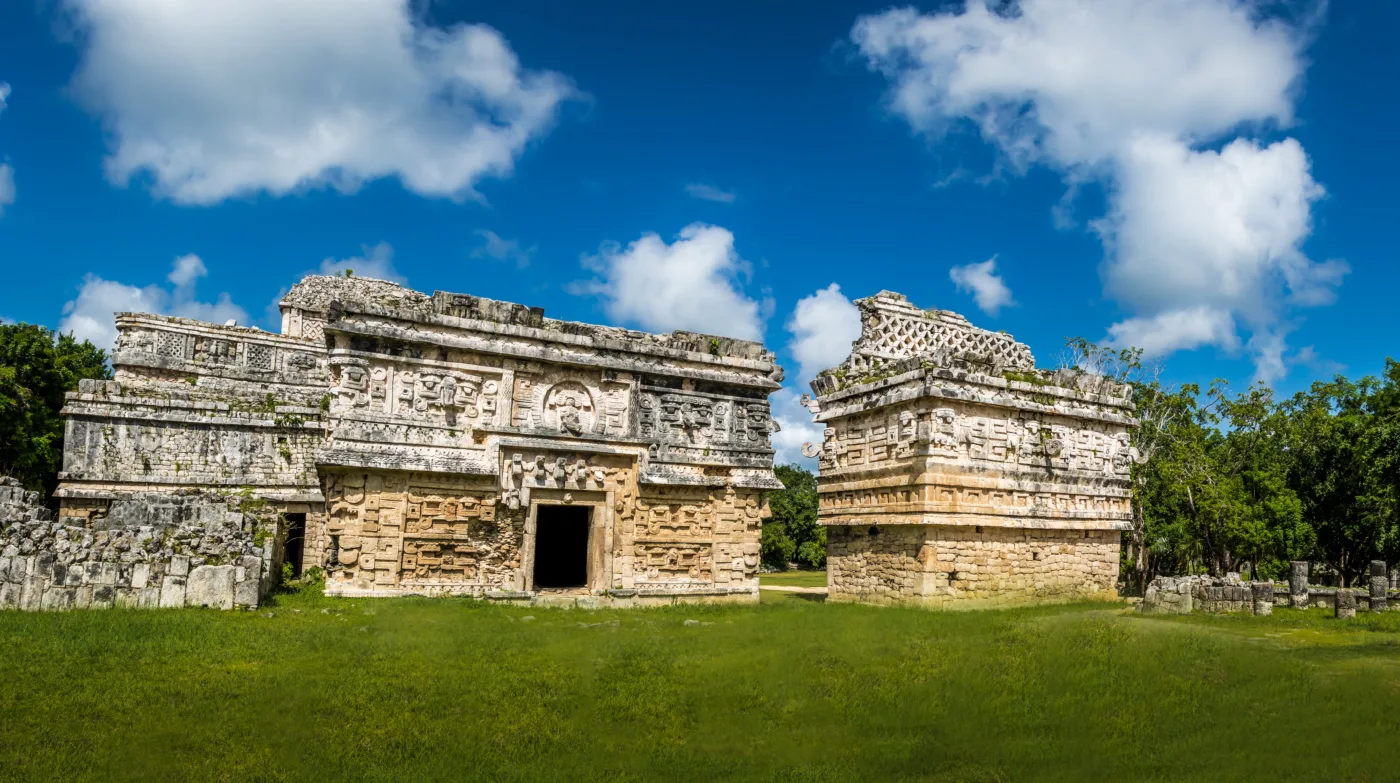
Their cities were meticulously planned, with wide, straight roads connecting important buildings and residential areas. The central plazas were bustling with activity, serving as the heart of the city where people gathered for ceremonies, markets, and social events. Palaces were home to the nobility and featured multiple rooms around central courtyards, adorned with detailed carvings and stucco decorations. Temples, such as the Temple of the Inscriptions at Palenque, were the tallest structures in the city, serving as places of worship and offering a physical connection between the earth and the sky.
Literature and Language
The Maya civilization is well-known for its advanced system of writing and its rich literature. They developed a writing system called Maya hieroglyphs, which used symbols to represent words and sounds. This system was complex and required years of study to master.
The Maya used their hieroglyphs to record important information about their history, religion, and daily life. They carved these symbols into stone monuments, painted them on pottery, and wrote them in books made from bark paper called codices. Some of the most famous Maya texts are the Dresden Codex, the Madrid Codex, and the Paris Codex. These books contain information about their calendar, astronomy, and religious rituals, providing us with a wealth of knowledge about their civilization.
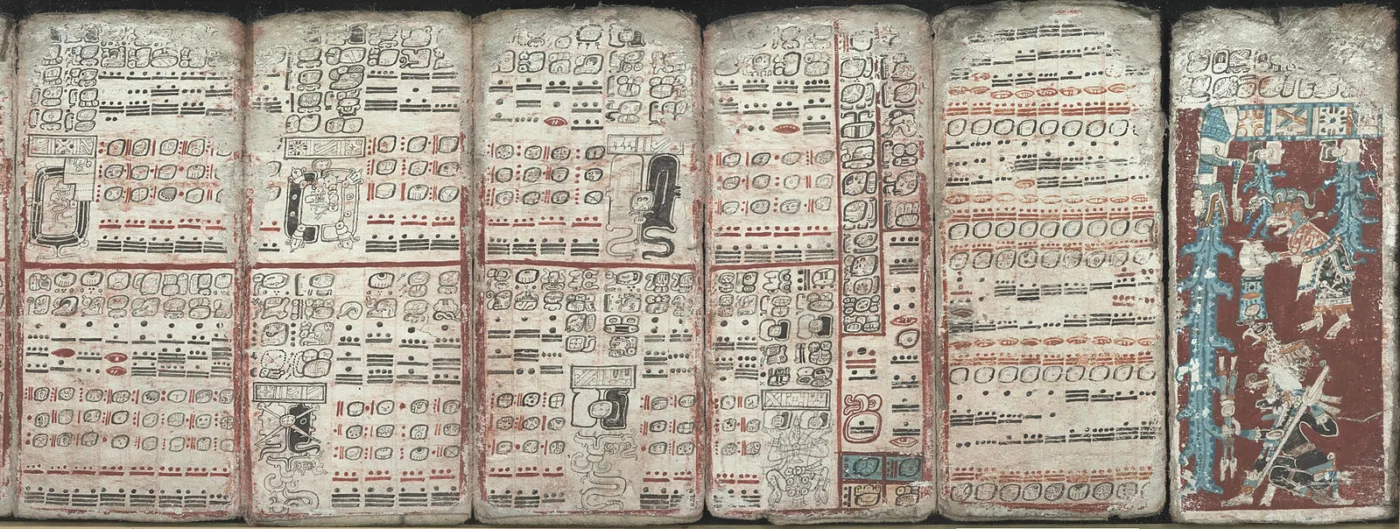
Maya literature includes a variety of texts, such as historical records, religious texts, and poetry. The Popol Vuh is one of the most famous works of Maya literature. It tells the story of the creation of the world, the adventures of the Hero Twins, and the history of the K’iche’ Maya people. This epic tale was passed down orally for generations before being written down in the 16th century. Another important text is the Chilam Balam, a collection of books that contain a mix of mythological, historical, and prophetic texts.
These works show the Maya’s deep understanding of their world and their place in it. The Maya language itself was highly developed, with many different dialects spoken across their vast territory. Even today, millions of people in Mexico and Central America speak Maya languages, keeping the rich linguistic heritage of the Maya civilization alive.
Science and Religion
The Maya civilization made significant advancements in both science and religion, which were deeply intertwined in their daily lives. In science, the Maya excelled particularly in astronomy and mathematics. They carefully observed the movements of the sun, moon, and planets, creating detailed astronomical charts. These observations helped them develop a complex calendar system, including the Long Count calendar, which tracked longer periods of time and was used to predict celestial events and agricultural cycles.
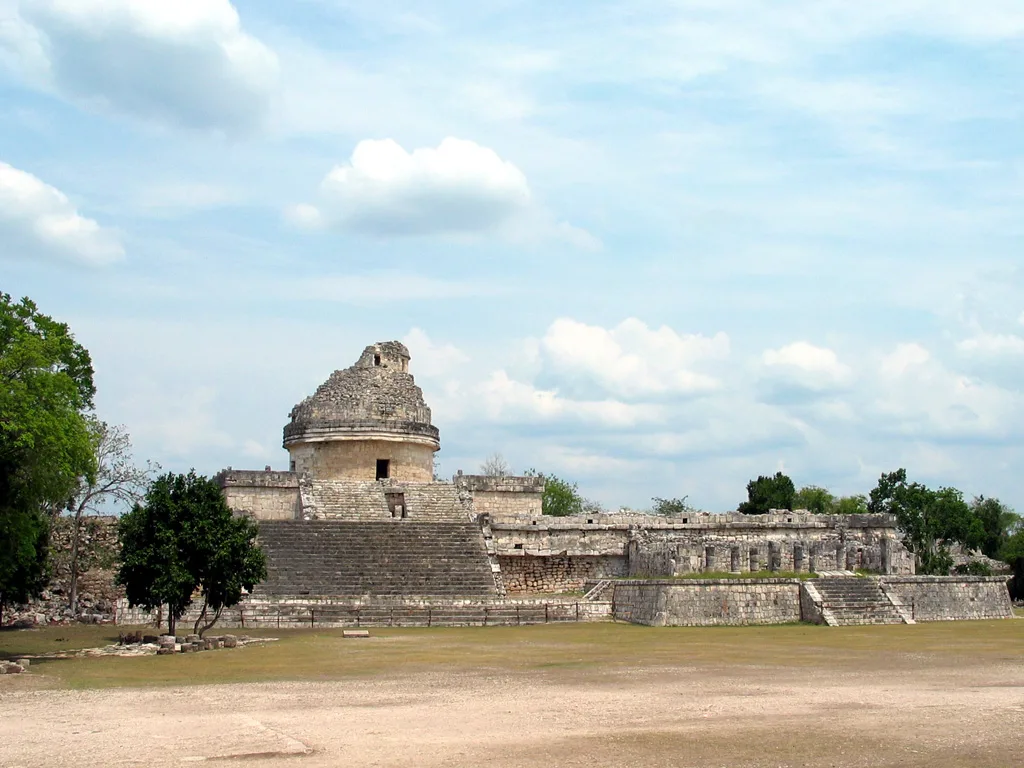
They were able to predict solar eclipses and understand the cycles of Venus. Artifacts like the Dresden Codex contain detailed astronomical tables that show the precision of their astronomical knowledge. Their understanding of mathematics included the concept of zero, a remarkable achievement for that time, which allowed them to perform complex calculations and create sophisticated architectural designs.
In religion, the Maya believed in a pantheon of gods who controlled various aspects of the natural world and human life. They practiced elaborate religious ceremonies to honor these gods, which often included offerings, rituals, and sacrifices. The Maya built large ceremonial centers with pyramids and temples, like the Temple of the Inscriptions at Palenque, where these rituals took place. Religion influenced all aspects of Maya life, from politics to agriculture.
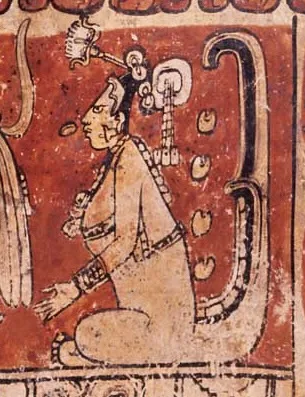
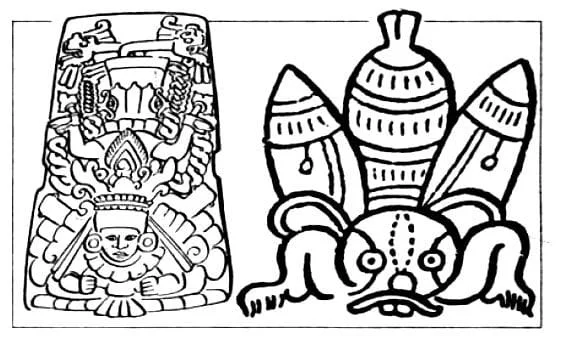
Kings and priests played crucial roles in conducting ceremonies and interpreting the will of the gods. Artifacts such as the carved stelae and painted murals depict these religious activities and the gods they worshipped, providing a vivid picture of their spiritual life. The Maya also believed in an afterlife and had a detailed mythological framework that explained the creation of the world and the fate of souls after death, as illustrated in texts like the Popol Vuh.
Conlcusion
The Maya Civilization is renowned for its advanced writing system, detailed calendar, and impressive architecture, including pyramids and temples. Located in Mesoamerica, the Maya thrived in diverse regions, leveraging the environment for agriculture, water management, and building materials. Their society was complex, with distinct social hierarchies, vibrant cultural practices, and significant achievements in astronomy, mathematics, and trade.
More of → Ancient Civilizations ←
FAQ
1. What were the Maya known for?
The Maya were known for their advanced writing system, detailed calendar, and impressive architecture like pyramids and temples.
2. How did the Maya write?
The Maya used hieroglyphs, a system of symbols, to write on stone monuments, pottery, and bark-paper books called codices.
3. What did the Maya eat?
The Maya mainly ate maize (corn), beans, squash, and chili peppers, often grown using advanced agricultural techniques like terracing.
4. How did the Maya trade?
The Maya traded goods like jade, obsidian, and cacao over long distances through an extensive network of trade routes.
5. Why did the Maya build pyramids?
The Maya built pyramids for religious ceremonies and as monuments to their gods and rulers, often aligning them with astronomical events.
